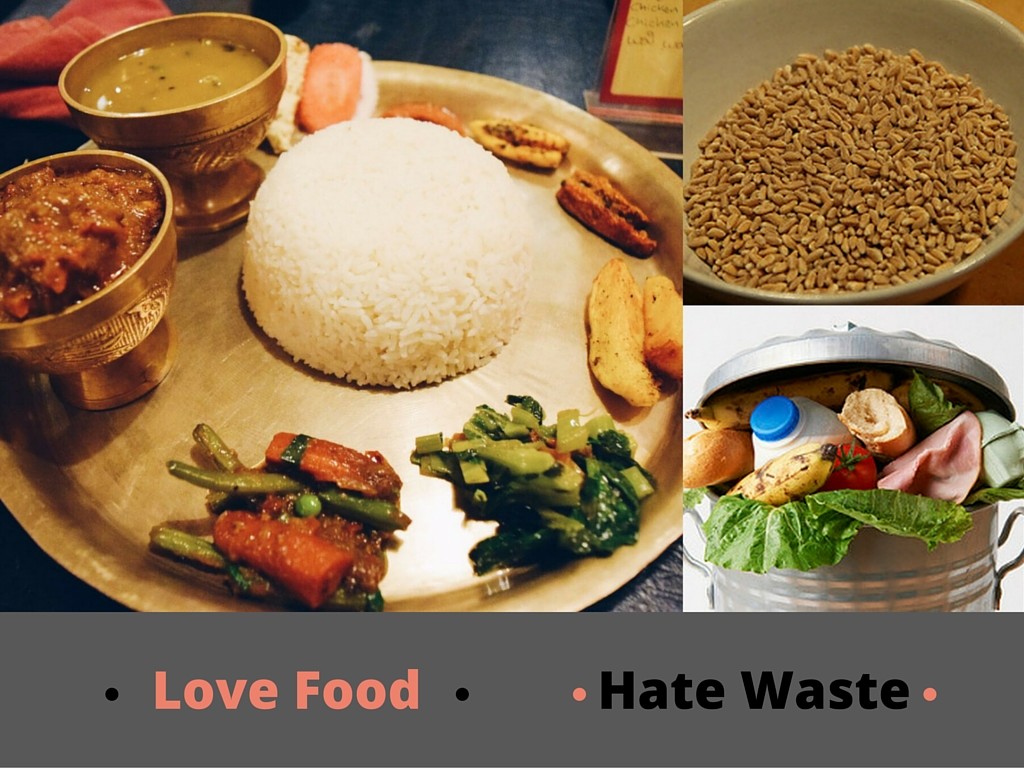India is home to the largest number of hungry people in the world – approximately 194.6 million people are undernourished, which accounts for the highest number of people suffering from hunger in any single country.
In Delhi alone, there are nearly 10 lakh vulnerable individuals that lack access to wholesome and nutritious food. There are places in the capital where food goes from ‘farm to not a table’, which is alarming considering the number of food-insecure households that struggle to keep a day’s meal on the table.

Photos courtesy of Nilakshi Basumatary and Flickr.com, edited by Arushi Sharma
In such a scenario, it has become pertinent to address our relationship with not only the food we eat, but also with the food we don’t, just so the surplus and salvage food wouldn’t rot.
This demands a lot of effort at the donors’ end besides the precursory will. You have to box it, store it, coordinate deliveries for it, which involve a lot of overheads.
This is where a food banking network comes in – it is a streamlined system that brings together logistics, technology, and stakeholders from the private, public, educational and NGO sectors to support sustained feeding, so that it reaches those in need of it. It basically ensures that it’s not ‘easier’ to just throw food away when it can be donated.

Graphic by Arushi Sharma
Foodbanking as a concept has been implemented globally since 1967 with the first Foodbank in Arizona, USA. Back home, one such initiative is the Delhi NCR FoodBank, striding confidently by feeding over 10,000 meals daily in Delhi NCR.
Implemented by Responsenet Development Services, India, and supported by partners like Cargill, GAIN and DLF Foundation, the FoodBank collects food and non-food donations from individuals, food companies, manufacturers, exporters, distributors, supermarkets, retailers, corporate, schools and individuals and redistributes these to those in need through feeding centres which provide services to schools, charitable hospitals, orphanages, the homeless and faith-based organizations.
It is not a traditional Foodbank model and is operating on a unique localised model with a focus on providing nutrition as the core metric of measurement while acting as a vehicle to increase public awareness about hunger and malnourishment.
Donations of non-perishable food items can be easily executed as they can be stored in the warehouse to be sent for distribution on a need basis. The absence of the Good Samaritan law in India restricts cooked food donation to some extent, which otherwise could have been salvaged to feed many.

Graphic by Arushi Sharma
Say, you are a manufacturer or distributor, or you have a grocery store or a food-related company, and you have food that has damaged packaging, branding issues, recall or surplus, the FoodBank can save you the logistics and the repackaging costs while easily letting you donate the food and ensure a nutritious meal to someone who would otherwise have to sleep on an empty stomach.
Hunger and malnutrition are an appalling reality of the society that we live in, and it can be combated by contributing towards the cause in whatever capacity we can. While government support can be instrumental, the only requisite that this subject calls for is awareness and action at the community level.
It only costs INR 14 to feed a salubrious meal to someone without access to it, and just INR 5110 to provide nutritious meals for an entire year to a child or a vulnerable individual. By making a financial donation towards the cause, you can take the first step towards becoming part of the solution.
The FoodBank also organizes charity galas and collaborates with events like The Grub Fest to enable its mission and vision.
Ultimately the aim is to create, through appropriate nutrition, the foundations for a food-secure and thereby socially stable society. The Delhi University chapter of Spoon University has started this campaign “Feed the Need” with the FoodBank to sensitize individuals, especially the well-meaning millennials, restaurants, and other stakeholders and bring in the necessary support to enable change.
This article is the first in a series aimed at creating awareness about the issues of hunger, malnutrition and food wastage.


